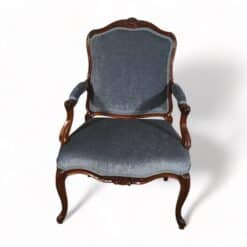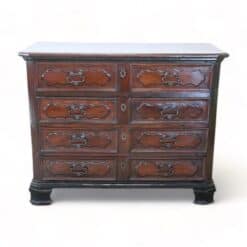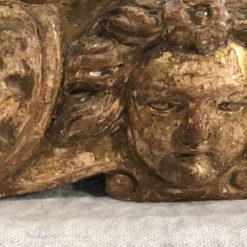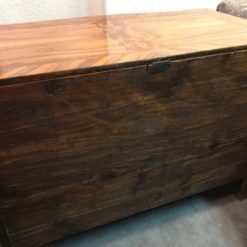Best Sellers
Baroque, Furniture, Style, Styylish History
German Baroque Furniture: A Masterpiece of Opulence and Craftsmanship
German Baroque Furniture: The Height of Opulence and Craftsmanship
German Baroque furniture is a true symbol of luxury and artistic mastery. Emerging in the late 16th century and thriving in the 17th century, this style reflects the bold and extravagant tastes of the Baroque era. While Baroque design influenced all of Europe, Germany added its own flair with detailed carvings, intricate marquetry, and the expert use of veneer. Even today, German Baroque furniture stands out for its elaborate craftsmanship and rich materials, making it a favorite among antique collectors and interior designers.

The Defining Features of German Baroque Furniture
German Baroque furniture is known for its striking elements and rich details. Here are some key characteristics:

1. Exquisite Carvings
At the core of German Baroque furniture are intricate carvings. Craftsmen used their skills to add depth and texture to each piece. These carvings often featured religious themes, mythical creatures, or floral designs, giving the furniture a dramatic and dynamic appearance. German artisans had an eye for detail, and their wood carvings reflected their mastery of the craft.
2. Veneer and Marquetry

One of the most impressive techniques of German Baroque furniture was the use of veneer. Thin layers of fine wood were applied over solid wood to create elegant surfaces. This allowed artisans to use expensive woods like rosewood, walnut, and ebony, without compromising durability.
Taking veneer a step further, craftsmen used marquetry to create stunning patterns. Marquetry involved inlaying pieces of different woods (and sometimes materials like ivory or mother-of-pearl) into the furniture’s surface. The result was elaborate designs, often featuring natural elements like flowers or birds. Marquetry turned ordinary surfaces into detailed works of art, adding even more character to these already opulent pieces.
3. Gold Accents
German Baroque furniture often featured gilded accents. Gold leaf was applied to enhance carvings, borders, or entire sections of furniture. This gave each piece a lavish, luxurious look. Gold not only added a sense of wealth but also highlighted the craftsmanship. Whether on a chair’s arms or a cabinet’s frame, gilding was used sparingly yet effectively.

4. Dynamic Shapes
Baroque design embraced bold, flowing forms. Furniture pieces often featured curved lines, creating a sense of movement and life. Chairs had cabriole legs, which curved gracefully outward and then inward, and cabinets and chests boasted serpentine fronts. These soft, rolling shapes made the furniture feel dynamic and alive, breaking away from the rigid designs of earlier periods.
Key Pieces in German Baroque Design
Some furniture pieces became iconic in the Baroque era, with distinct shapes and features that defined the period.
The Schrank
The Schrank was a large wardrobe or cabinet and a focal point of many Baroque interiors. These massive pieces weren’t just practical for storage—they were status symbols. Typically, they had detailed carvings, veneer work, and sometimes marquetry, turning them into showpieces in aristocratic homes.

The Commode
Another standout piece was the commode, a low chest of drawers that usually featured a marble top. Its curved front and detailed carvings made it a favorite among the elite. The commode was not only practical but also added a touch of luxury to any room it graced. Today, antique commodes from the Baroque era remain highly desirable for their elegance and craftsmanship.

Baroque Chairs
Chairs from the Baroque period were grand and imposing. High-backed with elaborately carved frames, these chairs often had upholstered seats covered in rich fabrics like velvet or silk. The use of gold accents and cabriole legs made them both comfortable and visually striking.
German Baroque Furniture in Modern Interiors
Though centuries old, German Baroque furniture still has a place in today’s homes. Designers and homeowners often use these pieces to add a sense of history and drama to modern interiors. A Baroque armchair can be reupholstered in a contemporary fabric for a fresh look while keeping its historical charm. A gilded mirror can bring an elegant, focal point to a minimalist space.

Marquetry and veneer techniques have also inspired modern furniture design. Many pieces today draw on these traditional methods, using contrasting woods to create eye-catching designs that blend old and new.
Why You Should Collect German Baroque Furniture
If you’re passionate about history and artistry, German Baroque furniture offers unmatched beauty and craftsmanship. Each piece tells a story, showcasing the skill and creativity of artisans from a golden age of furniture making. These items were built to last, with high-quality materials and careful construction, making them timeless.
Baroque pieces add character to any space. Whether you place a grand Schrank in a modern home or feature a marquetry-inlaid commode in a contemporary room, you’re bringing history to life. Plus, with demand growing for unique and historically significant pieces, German Baroque furniture is not only a beautiful addition to your home but also a valuable investment.
Conclusion
German Baroque furniture represents the height of luxury and craftsmanship. With its rich use of veneer, stunning marquetry, and intricate carvings, each piece is a masterpiece. The gold accents and dynamic shapes add a level of drama and sophistication that’s hard to find in other styles. Whether you’re a collector or a design enthusiast, adding a German Baroque piece to your home brings elegance, history, and character to any space.
At Styylish, we offer a curated selection of German Baroque furniture, each piece chosen for its beauty and historical significance. Explore our collection and discover how these stunning works of art can transform your interior.










































